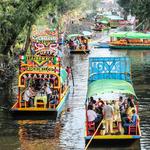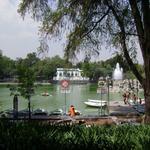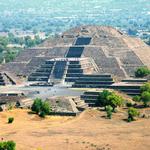Talia & David
Explore CDMX

Trajineras Xochimilco magico
You have to make a half-day visit to the colorful, iconic trajineras (canal type boats), which float up and down the many chinampas (canals) of the region on a daily basis. Either buy food and pulque from the floating vendors or pack some beers and sandwiches, but be sure not to get scammed on the price!

Mexico Park
Located in the upscale Condesa neighbourhood, Parque México has been an icon of both the zone and the city for decades and is easily one of the loveliest urban green spaces in the capital. As well as being surrounded on all sides by Art Deco buildings, the park is also home to some similarly impressive stand-out pieces, most notably the sleek blue and white Clock Tower.

Bosque de Chapultepec & El Castillo de Chapultepec
Basically the Mexico equivalent of Central Park, Bosque de Chapultepec is the lungs of Mexico City. Filled to the brim with top museums, the Castillo de Chapultepec is a particular highlight; once the backdrop for scenes in Romeo + Juliet, it is now a humble Museo Nacional de Historia and former Royal residence.

San Juan Teotihuacán
The ancient Mesoamerican pyramids of Teotihuacán, in the Valley of Mexico, once served as the largest city in the pre-Columbian Americas. It is thought that during the first millennium A.D. the city had around 125,000 people, including multi-ethnic groups such as the Otomi, Zapotec, Mixtec, Maya, and Nahua. If you have a few days in Mexico City, it's worth the day trip. (Teotihuacán is about an hour outside the city by car.) Leave early in the morning so you can be back in the city by mid-day—and bring sunscreen!